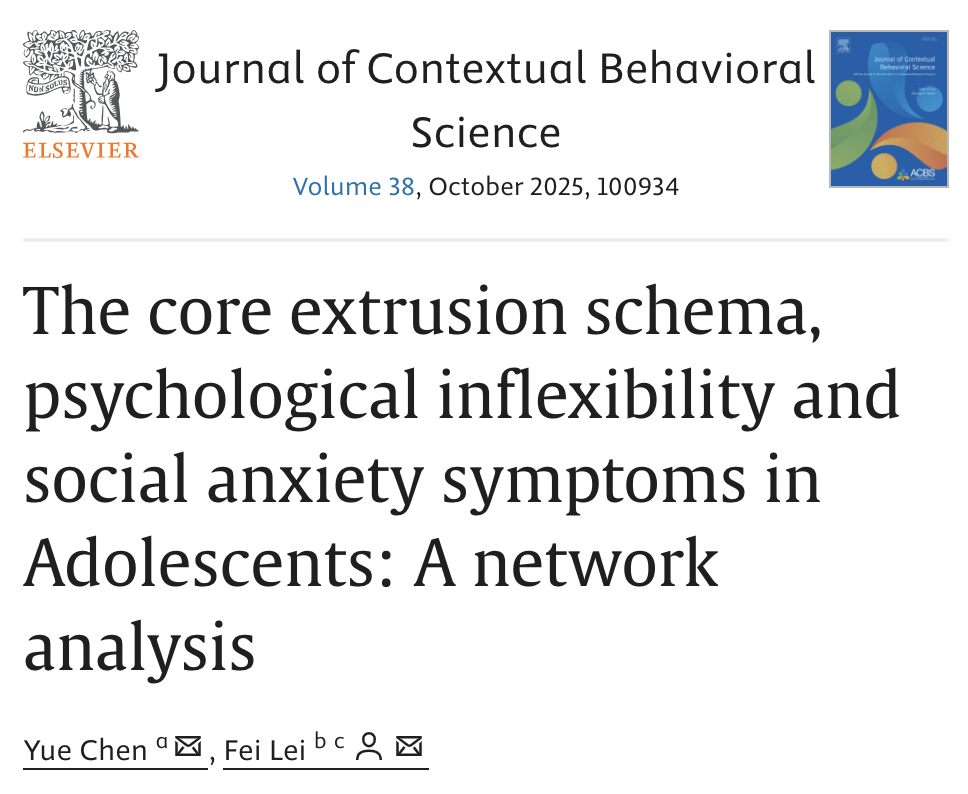Journal of Contextual Behavioral Science (JCBS)
Volume 38, October 2025
Authors
Yue Chen & Fei Lei
Key Findings
- CES and PI models of social anxiety symptoms were examined.
- “Hiding Oneself in Socialization” and “Fear of the Real Self Being Perceived” may sustain social anxiety symptoms.
- When cognitive fusion affects students' academic performance, it both triggers and perpetuates symptoms of social anxiety.
Abstract
The core extrusion schema (CES) and psychological inflexibility (PI) significantly influence individuals’ experiences of social anxiety. Previous research has predominantly centered on correlations and regressions between PI, CES, and social anxiety, leaving a gap in understanding at the symptom level. However, investigating these symptom-level relationships may not only provide valuable insights into the dynamics among PI, CES, and social anxiety symptoms, but also point toward more targeted strategies for clinical treatment and prevention. In this study, network analysis was employed to examine symptom-level interconnections among symptoms of PI, CES, and social anxiety in a sample of 1745 high school students. Results from the PI network highlighted the significant impact of cognitive fusion on school life, particularly how “Thoughts Hinder Performance in School” drives social anxiety symptoms. Results from both the CES network and a combined network incorporating all variables pointed to “Hiding Oneself in Socialization” and “Fear of the Real Self Being Perceived” as crucial in sustaining the co-occurrence of social anxiety symptoms, CES variables, and PI variables. These findings may help illuminate the cognitive processes that perpetuate social anxiety symptoms and reveal precise targets for clinical intervention.
